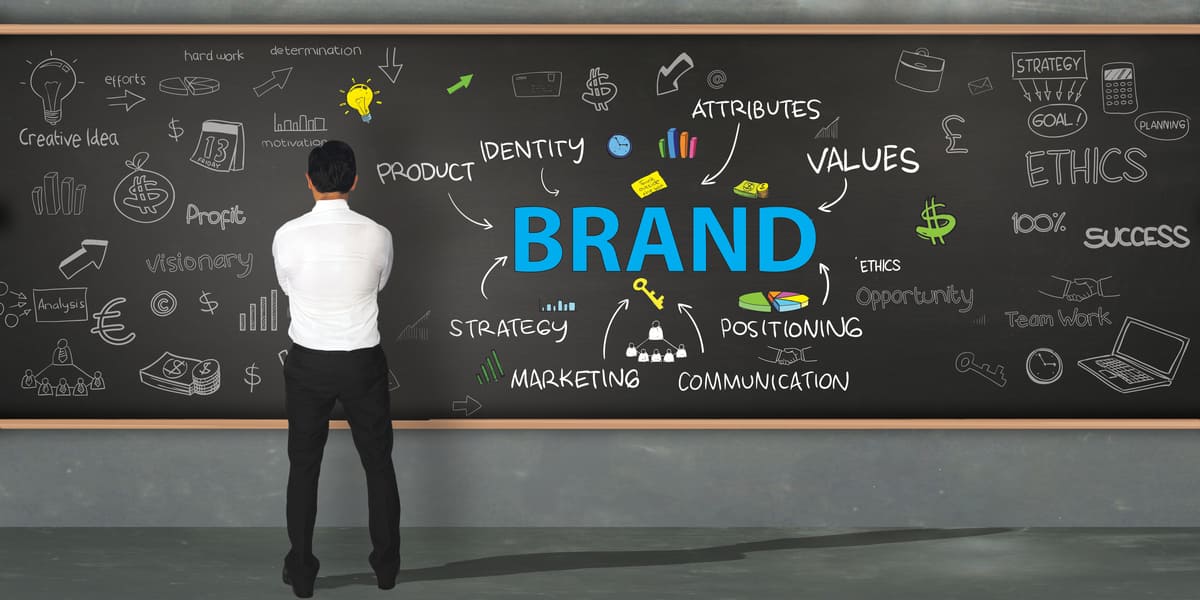LinkedIn personal branding can make you more likely to attract the best job offers.
LinkedIn now has over 310 million daily users, and standing out has become tougher than ever. Recent data shows more than 120 applicants compete for every job posting on the platform. The competition is fierce.
But the numbers work in your favor if you invest in your online presence. For example, a good profile picture makes professionals 21 times more likely to be viewed and 9 times more likely to receive connection requests.
On top of that, 82% of hiring managers prefer candidates with a solid online presence.
LinkedIn’s personal branding isn’t just about appearances—it’s about strategic positioning. A strong personal brand helps you distinguish yourself from competitors and establish credibility in your field. You can tap valuable networking opportunities, too.
In this comprehensive guide, we will show you exactly how to build a compelling LinkedIn presence that gets you noticed by the right people.
Ready to change your profile from overlooked to just what employers need?
Understand What Personal Branding Means

Personal branding isn’t just another buzzword. It’s a strategic way to create, position, and keep a positive public image of yourself. Your professional reputation comes from what others think of you based on your experience, expertise, and achievements.
What is personal branding and why it matters
Your personal brand shapes how people see you professionally. You get to tell your own story and become an authority in your field instead of letting others define who you are.
A good personal brand shows off your unique strengths, experiences, and values in a genuine way. This makes you stand out to potential employers [2]. Your brand needs to be:
- Accurate: A true picture of your skills and experience
- Coherent: Clear and logical to your audience
- Compelling: Showing your unique value that draws people in
- Differentiated: Standing out from others in your field
As competition rises, personal branding is becoming more important than ever. More than ever before, your online persona affects your career opportunities, so you need to manage how you present yourself online.
Benefits of personal branding for job seekers
Job seekers with strong personal brands have a clear advantage. LinkedIn data shows they are 40 times more likely to attract job opportunities. Most employers – about 80% – prefer candidates who have a solid online presence
A strong personal brand helps you:
- Get noticed when jobs come up
- Stand out among other qualified candidates
- Sell your value before meeting employers
- Build trust and credibility with potential employers
- Build better networking relationships that lead to referrals
Job hunting has changed completely over the last few years. Your resume used to be your first impression. Now, employers already know about you from your online presence before they see your resume. In other words, your personal brand works round the clock to showcase your expertise to the right people.
How recruiters in India view online presence
In India, recruiters take LinkedIn seriously – over 70% check a candidate’s profile before hiring. This is why you need a professional online presence.
Recruiters look for social proof on candidates’ profiles as a key factor. They want to see if your resume matches your online presence. Any mismatch could cost you the job.
A strong LinkedIn profile is an excellent way to build social proof and professional credibility. Employers check LinkedIn profiles before deciding on applications. An incomplete profile or one that doesn’t match your CV might make them pick someone else.
Define Your Brand Before You Build It

Before you can build your LinkedIn personal brand, you first need to define who you are and what value you bring to the market. This sets the foundation for how you position yourself.
Identify your strengths and career goals
Ask yourself what makes you unique. Look beyond your job title to understand your core values, skills, and aspirations. Ask yourself:
- What skills do others praise you for?
- Which achievements make you proud?
- What activities bring you satisfaction?
- Where do you want to be professionally in five years?
Knowing your “Dependable Strengths” – skills you’ve used successfully and enjoyably time after time – creates career satisfaction. These strengths point to roles where you’ll naturally excel, whatever job titles you hold.
Research your target industry and roles
Next, it is time to deep dive into the trending skills in your target industry. Look up job descriptions for roles you are interested in. They can help identify skill gaps you need to address.
Focus on industry-specific terminology and keywords and include them in your LinkedIn profile. This is because recruiters often search for these specific terms to find candidates.
Create a personal branding statement
Think of your branding statement as the tagline of your personal brand – a clear, compelling declaration of your value. It’s what sticks in people’s minds.
A strong personal branding statement should:
- Identify your core strengths and expertise
- Explain your unique value proposition
- Speak directly to your target audience
- Distinguish you from competitors
An IT professional might say: “I help companies implement secure cloud solutions that reduce operational costs by 30% while improving system reliability.”
Use creative themes or ideas, including cultural or colloquial references, to make it interesting and memorable. The most effective statements stay concise (30-60 seconds when spoken) and avoid unnecessary jargon.
Remember, your personal brand statement should evolve with your career. This is because it represents your professional identity which can change over time.
Build a LinkedIn Profile That Reflects Your Brand

After defining your personal brand, the next crucial step is to optimize your LinkedIn profile. Your profile should convey key information quickly and invite viewers to engage with the rest of your content.
Optimize your headline and summary
The headline is what people see first in search results and drives profile views. Don’t settle for a simple job title. Make the most of those 220 characters to highlight your value. Here are some effective formats:
- “B2B Inside Sales Rep | ₹2.02 Crore generated in 2023”
- “Digital Marketing Specialist | Helping startups increase conversions by 40%”
- “Product Manager @ TechCo | Driving SaaS Growth 🚀 | Ex-Google | Product Coach”
Consider adding industry-specific keywords because 70% of Indian recruiters check LinkedIn profiles before making hiring decisions.
Give the summary (About section) special attention. This space lets you tell your professional story. Hook readers in the first few lines—that’s what shows before the “See more” button. Your summary should have:
- A brief overview of your expertise
- Your career path highlights
- Notable achievements with numbers
- An engaging call-to-action
Add measurable achievements to experience
The experience section is what makes your LinkedIn profile stand out. Skip the job duty lists. Focus on results using the Situation-Action-Result framework. For example, see:
“Increased customer retention by 25% in 6 months by implementing new onboarding processes.”
Measure your achievements with:
- Percentages (improved efficiency by 30%)
- Monetary values (generated ₹1.68 crore through strategic collaborations)
- Time frames (reduced production downtime by 25% within three months)
Recruiters value profiles that show problem-solving skills and concrete results.
Get endorsements and recommendations
Skills and endorsements boost your profile’s visibility. You can add up to 100 skills, but focus on ones that match your target roles. Each endorsement from your connections increases your chances of being found for related opportunities.
Endorsements or recommendations from co-workers, ex-colleagues, or professors create powerful social proof. These written testimonials verify your expertise and work ethic. Ask former managers, colleagues, and clients who know your strengths to write specific recommendations.
Smart ways to get endorsements:
- Endorse others first (they often return the favor)
- Connect with colleagues right after successful projects
- Set up your endorsement settings to prompt visitors
In recent times, hiring managers tend to pay attention to this aspect when evaluating candidates’ profiles. Building credibility over time strengthens your personal brand and makes your profile more appealing to potential employers.
Grow Your Network with Purpose

To build a LinkedIn personal brand that truly shines, you need to engage in smart networking— this will make you visible to potential employers.
Connect with alumni and industry peers
If you’re just getting started with networking online, LinkedIn’s Alumni tool helps you find graduates from your institution who work in your target industry. You can search for your school and select the Alumni tab to filter by graduation year, location, company, or job title.
Alumni connections provide some unique advantages. Studies show people are 70% more likely to connect with someone from their school or college. Your first step should be joining your university’s LinkedIn alumni groups. Almost every educational institution has at least one. You can establish visibility among potential connections by taking part in field-related discussions.
Send personalized connection requests
Active listening means you focus completely on the speaker rather than just hearing their words. You can show you’re engaged through non-verbal cues like nodding, which shows understanding without agreement. Keep your body language open and non-threatening by leaning forward slightly, matching the interviewer’s position, and keeping your arms uncrossed. These small changes help build rapport and show genuine interest.
Show enthusiasm and energy throughout
People often ignore generic connection requests. Personalized messages substantially increase acceptance rates. LinkedIn lets you add a personal note (up to 200 characters) with each connection request.
Your personalized invitations should:
- Point out a specific shared interest or mutual connection
- Highlight their work or recent achievements
- State why you want to connect
- Stay concise and professional
However, LinkedIn might restrict your account if multiple people report your invites as spam. Quality matters more than quantity when you grow your network.
Message recruiters with a clear CTA
The data shows 72% of recruiters actively use LinkedIn to find new talent. Start by researching 10 to 20 companies you’d like to work with.
Your messages to recruiters should:
- Show appreciation for connecting
- Show interest in specific roles
- Include a customized resume that showcases relevant skills
- Tell them if you’ve already applied online
- End with a clear call-to-action, such as suggesting a meeting
The timing of your message matters. Send them during business hours on weekdays and think about the recruiter’s time zone. Give them at least three days before you send a gentle reminder.
LinkedIn outreach is not a numbers game; building meaningful relationships is what matters. This approach transforms your personal brand into a powerful network that creates new career opportunities.
Stay Visible with Consistent Content and Activity

Only 1.1% of LinkedIn users post content weekly, which creates a great chance for job seekers who stay active. Your personal brand thrives when you optimize your profile, grow your network, and stay engaged regularly.
Post regularly with LinkedIn personal branding content ideas
LinkedIn values consistency more than frequency. A manageable posting schedule of 3-4 times weekly yields better results than random posts. Your personal branding content should:
- Share industry news with your unique view
- Tell stories about your professional growth
- Create helpful tips that showcase your expertise
- Give fresh angles to content that worked before
Mix text posts, documents, images, and videos to keep your audience interested. Your content becomes instantly recognizable when you stick to your brand colors and fonts.
Involve yourself with trending topics in your field
Your knowledge and forward-thinking nature shine when you join trending conversations. Here’s how to find trending topics:
- Watch your LinkedIn news feed for popular posts
- Follow industry-specific hashtags
- Search LinkedIn to find active discussions
- Use tools like Taplio to track LinkedIn trends
Your profile views can jump 15% when you comment on trending posts. The visibility of your content improves substantially when you interact with others’ posts 30 minutes before sharing your own.
Use hashtags and tag relevant people
Using smart hashtags helps others find your content beyond your network. Keep it simple with 3-5 relevant hashtags per post. The best results come from mixing specific industry hashtags with broader terms.
You don’t need existing connections to tag relevant professionals. This strategy helps your content reach their followers, including recruiters and hiring managers.
Track your post performance using analytics
LinkedIn’s analytics show which content is popular with your audience. You can see these stats by clicking on your post’s impressions count. Keep an eye on engagement metrics, viewer demographics, and how your content performs over time.
A simple spreadsheet helps you track topics that get the most engagement. These analytical insights let you fine-tune your strategy based on what works best for your audience and industry.
Conclusion
Building a powerful LinkedIn personal brand requires consistent effort, but the rewards make this investment worth it.
However, personal branding isn’t about creating a fake persona. It’s about showcasing your strengths, experiences, and aspirations authentically. In addition, you must adapt to the changes in trends and preferences, especially in India’s competitive job market. The key is to adapt your positioning and content strategy
Start using these LinkedIn branding techniques today. Small but consistent actions will build your professional reputation and expand your network. You’ll end up connecting with opportunities that match your career goals. The competition might be fierce, but a well-laid-out personal brand will help you stand out for all the right reasons.
Key Takeaways
Building a strong LinkedIn personal brand can dramatically increase your job opportunities and help you stand out in today’s competitive market.
Remember, recruiters increasingly check LinkedIn profiles before hiring decisions, making your personal brand a critical factor in job search success. Consistency beats perfection—start implementing these strategies today to build your professional reputation over time.


